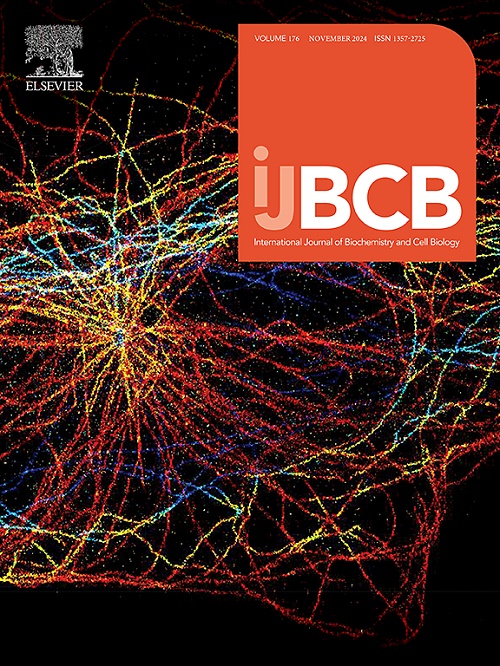Therapeutic potential of TIM-3 inhibition in cancer, viral infections, and autoimmune disorders
IF 2.8
3区 生物学
Q2 BIOCHEMISTRY & MOLECULAR BIOLOGY
International Journal of Biochemistry & Cell Biology
Pub Date : 2025-07-01
DOI:10.1016/j.biocel.2025.106826
引用次数: 0
Abstract
TIM-3 (T cell immunoglobulin and mucin domain protein-3) is a potent checkpoint receptor that functions as a negative regulator of the immune response. Numerous immune cells, including monocytes, TH17 (T helper 17) cells, mast cells, myeloid cells, and Treg (regulatory T) cells, express TIM-3. It consists of four ligands: HMGB1 (High Mobility Group Protein B1), PtdSer (Phosphatidylserine), Galectin-9, and CEACAM-1 (Carcinoembryonic Antigen Cell Adhesion Molecule 1). Research has shown TIM-3's role in cancers, chronic viral infections, and autoimmune disorders. Inhibiting TIM-3, therefore, is a therapeutic approach in the current immunotherapy, particularly when combined with other immune checkpoint inhibitors. The review summarizes its function in different disorders and its potential signaling mechanisms.
抑制tim-3在癌症、病毒感染和自身免疫性疾病中的治疗潜力。
TIM-3 (T细胞免疫球蛋白和粘蛋白结构域蛋白-3)是一种有效的检查点受体,可作为免疫反应的负调节因子。许多免疫细胞,包括单核细胞、TH17 (T辅助性17)细胞、肥大细胞、骨髓细胞和Treg(调节性T)细胞,都表达TIM-3。它由四种配体组成:HMGB1(高迁移基团蛋白B1)、PtdSer(磷脂酰丝氨酸)、半乳糖凝集素-9和CEACAM-1(癌胚抗原细胞粘附分子1)。研究表明TIM-3在癌症、慢性病毒感染和自身免疫性疾病中的作用。因此,抑制TIM-3是目前免疫治疗的一种治疗方法,特别是与其他免疫检查点抑制剂联合使用时。现就其在不同疾病中的作用及其潜在的信号机制作一综述。
本文章由计算机程序翻译,如有差异,请以英文原文为准。
求助全文
约1分钟内获得全文
求助全文
来源期刊
CiteScore
8.10
自引率
0.00%
发文量
124
审稿时长
19 days
期刊介绍:
IJBCB publishes original research articles, invited reviews and in-focus articles in all areas of cell and molecular biology and biomedical research.
Topics of interest include, but are not limited to:
-Mechanistic studies of cells, cell organelles, sub-cellular molecular pathways and metabolism
-Novel insights into disease pathogenesis
-Nanotechnology with implication to biological and medical processes
-Genomics and bioinformatics

 求助内容:
求助内容: 应助结果提醒方式:
应助结果提醒方式:


